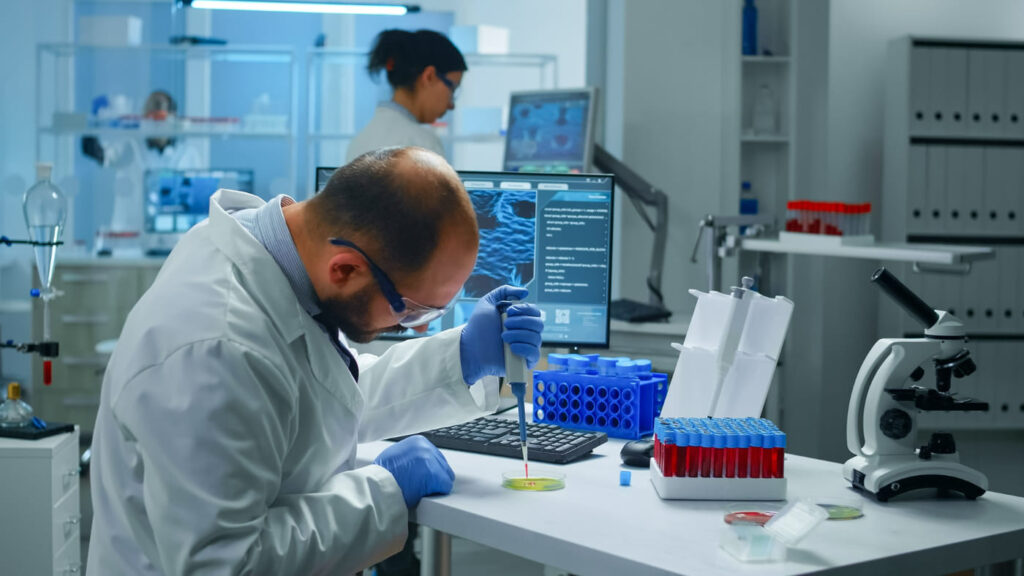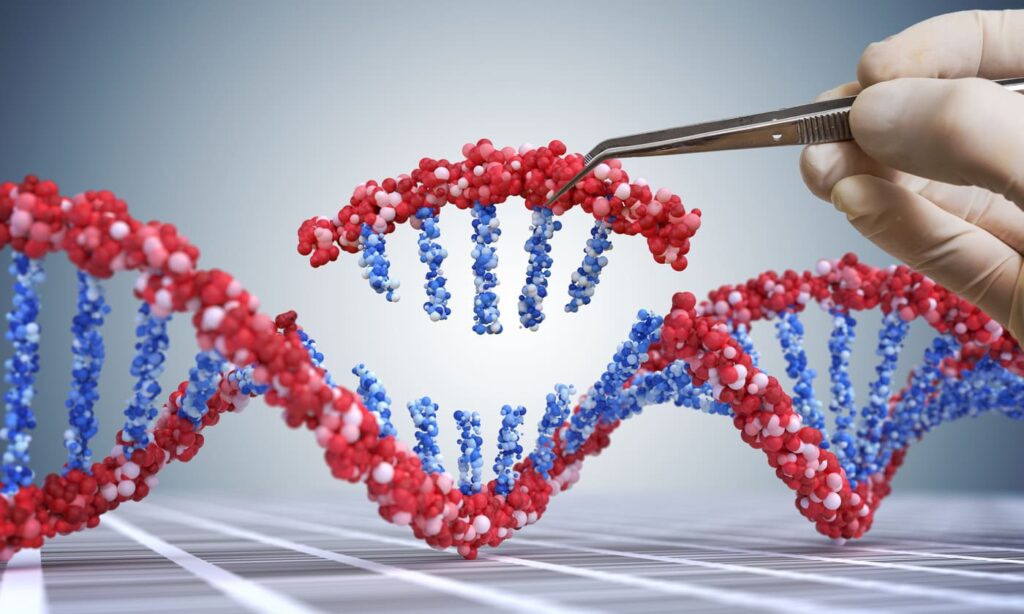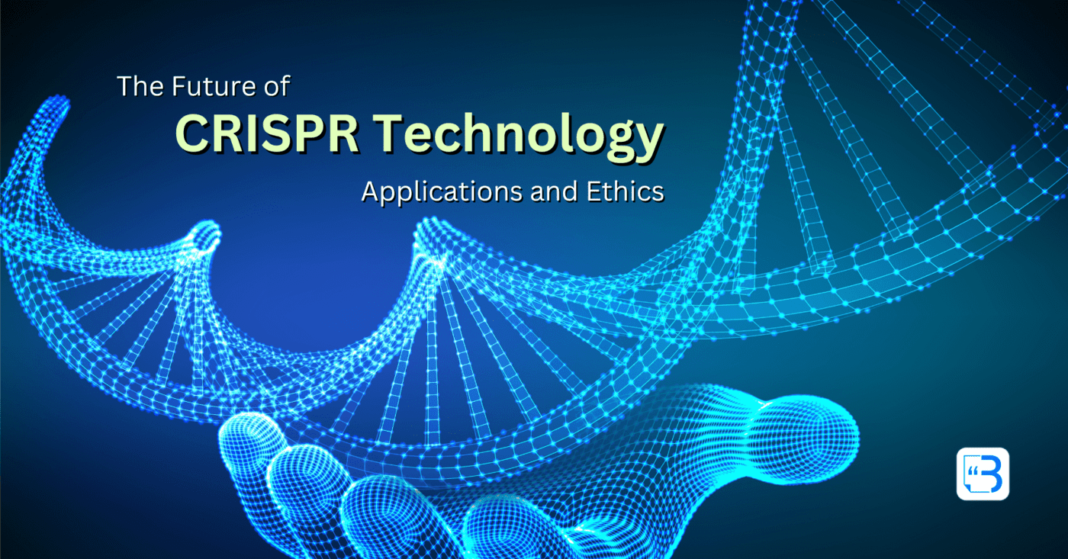In the realm of genetic science, few innovations have captured the public imagination and scientific curiosity as profoundly as CRISPR technology. Short for Clustered Regularly Interspaced Short Palindromic Repeats, CRISPR is more than just a technical acronym; it symbolizes a world of unprecedented possibilities in genetic modification and therapy. As we find ourselves on the cusp of a revolution that promises to redefine healthcare, agriculture, environmental conservation, and much more, taking a comprehensive look at this technology becomes imperative.
Beyond the dazzling potential for curing genetic diseases, enhancing agricultural yield, and even the speculative resurrection of extinct species, lies a complex labyrinth of ethical considerations. These considerations beckon us to navigate carefully through the uncharted waters of genetic manipulation. The dilemmas and debates surrounding the ethical aspects of CRISPR technology are as compelling and essential as the technology itself.
This blog post aims to serve as your comprehensive guide through the fascinating yet intricate world of CRISPR technology. Whether you are a scientist, ethicist, policy-maker, or someone who is simply intrigued by the promise and peril of gene editing, this exploration is for you. We will delve deep into its groundbreaking applications and probe the ethical dimensions that accompany its use.
The story of CRISPR is still being written, and it’s a narrative that could very well redefine what it means to be human. As we stand at this intersection of incredible scientific innovation and profound ethical considerations, we invite you to read on and engage with one of the most compelling topics of our time.
Table of Contents
Section 1: Understanding CRISPR Technology
What is CRISPR?
CRISPR, an acronym for Clustered Regularly Interspaced Short Palindromic Repeats, is one of the most transformative innovations in the realm of genetic engineering. Originating from a natural defense system in bacteria, this system has been repurposed by scientists into a highly precise gene-editing tool. By utilizing CRISPR-associated proteins, particularly Cas9, scientists can now target specific DNA sequences within the genome, enabling them to edit, add, or remove genetic material as required. This incredible technology offers vast potential applications across medicine, agriculture, and conservation, to name just a few domains. However, like any groundbreaking innovation, it also poses a set of challenges, especially when considering the ethical ramifications of its applications.

How Does CRISPR Work?
At its core, CRISPR is a molecular toolkit that allows researchers to target specific locations in an organism’s DNA and make precise changes. The mechanism behind its magic can be understood in a few essential steps:
- Defense Mechanism in Bacteria: The origins of CRISPR lie in the natural world. Bacteria use CRISPR sequences as part of their defense mechanism against viruses. When a virus invades a bacterium, the latter can capture snippets of the virus DNA and store them in its own genome as a CRISPR sequence. This allows the bacterium to “remember” the virus and defend against it in future attacks.
- Guided Targeting: The bacterium produces RNA molecules from the CRISPR sequence, which then pairs with a CRISPR-associated protein (most commonly Cas9). This pairing creates a guidance system, where the RNA molecule directs the Cas9 protein to the exact location of the invading virus DNA based on its stored sequence.
- DNA Cutting: Once at the target site, the Cas9 protein acts as a pair of molecular scissors, cutting the DNA at the specified location. In scientific applications, this process allows researchers to precisely target and edit specific genes.
- Gene Editing: Once the DNA is cut, the cell’s natural repair mechanisms kick in. Researchers can leverage these mechanisms to add, delete, or replace DNA sequences. By introducing specific DNA sequences into the cell, they can guide the repair process to make precise changes to the genome.
In essence, CRISPR-Cas9 technology is akin to having a GPS-guided molecular scalpel. It offers the power to locate and edit any sequence within a vast genome landscape, opening up avenues for profound advancements in genetic research and applications.
Section 2: Applications of CRISPR Technology
Medical Advancements
The application of CRISPR technology in the medical field has opened doors to possibilities that were once considered futuristic. Here’s how:
- Curing Genetic Disorders: Many genetic disorders, like cystic fibrosis or muscular dystrophy, are caused by specific mutations in the DNA. CRISPR allows scientists to correct these mutations at the source. By editing the faulty genes, treatments that were once thought impossible are now within reach.
- Eradicating Cancer Cells: CRISPR’s precision targeting is being harnessed to destroy cancerous cells without affecting the surrounding healthy tissues. Researchers are working on ways to modify immune cells to specifically attack tumors, potentially revolutionizing cancer therapy.
- Combating Infectious Diseases: The technology’s ability to edit genes extends to the battle against infectious diseases such as HIV. By altering specific receptors in immune cells, scientists are making these cells resistant to the virus.
The promise of CRISPR in medicine is awe-inspiring, and ongoing research continues to uncover new possibilities for curing and managing various diseases.

Agriculture and Environmental Benefits
CRISPR is not only limited to human health; it’s making waves in agriculture and the environment as well:
- Enhancing Crop Yield: By editing genes that control growth and development, scientists are able to create crops that produce higher yields, thereby helping to address global food shortages.
- Resistance to Pests and Diseases: CRISPR allows for the development of crops that are more resistant to diseases and pests. This leads to a reduction in the need for chemical pesticides, contributing to a more sustainable agricultural practice.
- Adaptation to Climate Change: The technology is being used to develop plants that can thrive in harsher climates, ensuring food security in regions most affected by climate change.
Animal Research and Conservation Efforts
Beyond humans and plants, CRISPR is also a key player in animal research and conservation:
- Advancing Animal Research: CRISPR enables researchers to create animal models with specific genetic characteristics, enhancing the understanding of various diseases and leading to more effective treatments.
- Conservation Efforts: The technology offers potential solutions to conservation challenges. For instance, it could be used to increase the genetic diversity of endangered species, giving them a better chance at survival.
- Ethical Considerations in Animal Research: It’s vital to recognize the ethical implications of using CRISPR in animals, as it raises concerns about welfare and the potential unforeseen consequences of genetic alterations.
Section 2 showcases the broad applications of CRISPR technology, illuminating its transformative impact across various fields. While these are exciting times, the journey of exploring CRISPR’s full potential is only just beginning. Continuous research and responsible utilization are key to unlocking its promise while navigating the complex ethical terrain that accompanies such a powerful tool.
Section 3: Ethical Considerations in CRISPR Technology
Editing Human Embryos
The prospect of editing human embryos through CRISPR technology brings forth a complex array of moral and ethical considerations:
- Designer Babies: One of the most widely discussed concerns is the possibility of creating “designer babies.” If parents have the ability to select specific traits for their children, what does this mean for societal perceptions of normality, disability, and diversity?
- Unforeseen Consequences: The effects of editing genes in embryos might not be fully understood until many generations later. The potential long-term risks to both individuals and humanity as a whole must be carefully weighed.
- Ethical Frameworks: Different cultures, religions, and philosophical frameworks might have varied opinions on the acceptability of altering the human germ line. Striking a global consensus becomes a significant challenge.
Potential Misuse and Accessibility
The power of CRISPR technology brings with it concerns over misuse and accessibility:
- Weaponization: The potential misuse of CRISPR for harmful purposes, such as the creation of biological weapons, cannot be ignored.
- Equitable Access: There’s a risk that CRISPR’s benefits may only be accessible to the wealthy, widening existing health and economic disparities. Ensuring that the technology is used for the greater good requires thoughtful policy and global cooperation.
- Dual-use Dilemmas: Research intended for beneficial purposes could inadvertently enable harmful applications. Striking the right balance between promoting innovation and preventing misuse is a complex task.
Regulations and Guidelines
Given the profound implications of CRISPR technology, regulations and guidelines are of utmost importance:
- Global Standards: Creating and enforcing global standards for CRISPR use is challenging, given the varied legal and cultural landscapes across different countries. International cooperation is vital.
- Existing Laws: Some countries have existing laws that can be applied to CRISPR technology, while others are still developing specific regulations. Consistency and clarity in the legal framework are necessary to foster responsible research and application.
- Transparency and Oversight: Robust oversight mechanisms and transparent reporting of research are essential to maintain public trust and ensure that ethical guidelines are followed.
Section 3 highlights the ethical considerations in CRISPR technology, drawing attention to the profound responsibilities that come with wielding such a powerful tool. It underscores the importance of engaging not just scientists and policymakers, but society at large in an ongoing dialogue. The moral compass guiding the future of CRISPR must be shaped by collective wisdom, empathy, and a commitment to the shared values of humanity. The conversation about ethics in CRISPR is as essential as the technology itself, ensuring that we tread this new frontier with awareness, compassion, and foresight.

Section 4: The Future of CRISPR Technology
Innovation and Development
As we stand on the cusp of a new era in genetic science, the future of CRISPR technology appears boundless. Here are some anticipated areas of innovation and development:
- Precision and Efficiency: Ongoing research is focused on enhancing the precision and efficiency of CRISPR, minimizing off-target effects, and fine-tuning its applications across various fields.
- Therapeutic Applications: The potential to treat or even cure genetic diseases through CRISPR is one of the most exciting prospects. Clinical trials are underway, and the coming years may see revolutionary medical breakthroughs.
- Environmental Solutions: From engineering drought-resistant crops to combating invasive species, CRISPR may offer innovative solutions to some of our most pressing environmental challenges.
- Integration with Other Technologies: CRISPR’s combination with other emerging technologies like artificial intelligence could lead to unforeseen advancements, accelerating research, and discovery.
Potential Risks and Challenges
While the future of CRISPR is brimming with promise, it is not without its potential risks and challenges:
- Ethical Boundaries: As technology advances, defining and adhering to ethical boundaries will become increasingly complex. The global community must engage in continuous dialogue to navigate these ethical landscapes.
- Regulatory Compliance: Keeping pace with rapidly evolving technology while ensuring robust regulations and compliance will be a critical challenge for governments and international bodies.
- Unintended Consequences: The risk of unintended genetic changes or ecological impacts from CRISPR interventions must be carefully assessed and managed.
- Public Perception and Trust: Building and maintaining public trust in CRISPR technology requires transparency, education, and responsible stewardship. Any missteps could lead to public backlash and hinder progress.
As we look ahead, the next frontier of CRISPR technology is ripe with promise and potential pitfalls. The technology is not developing in isolation but is part of a larger ecosystem of scientific advances, including artificial intelligence, nanotechnology, and brain-computer interfaces. For instance, combining CRISPR with brain-computer interface technology could lead to revolutionary treatments for neurological disorders.
Section 5: Public Perception and Acceptance of CRISPR Technology
The Role of Media in CRISPR Technology Perception
The media has an indelible impact when it comes to shaping public perception of CRISPR technology. Serving as the initial lens through which many encounter and learn about this complex field, the media can either clarify or distort CRISPR technology.
Balanced, well-researched journalism can be an invaluable educational tool for CRISPR technology. By taking the time to explore its nuances, offering expert opinions, and citing peer-reviewed studies, media outlets can contribute to a populace that’s more informed about CRISPR technology. This sets the stage for rational discourse and debate, which can guide better decision-making on both personal and policy levels.
In contrast, sensationalized stories can create misunderstandings and fears about CRISPR technology. Provocative headlines like “designer babies” or “Frankenfoods” might grab attention but often mislead the public on the multifaceted issues surrounding CRISPR technology.
Importance of Education and Public Outreach in Understanding CRISPR Technology
While media serves as a key avenue for public education on CRISPR technology, a more comprehensive, multi-pronged approach is often the most effective. Direct educational initiatives—like workshops, seminars, online courses, and interactive programs—can offer nuanced, in-depth knowledge that media snippets can’t provide.
Organizations and educational institutions can play a pivotal role in bridging the knowledge gap about CRISPR technology. Events that are accessible to the general public, students, and professionals can promote an interactive dialogue, enabling attendees to ask questions, challenge assumptions, and delve into the ethical dimensions of CRISPR technology.
Public outreach is more than just disseminating facts; it’s also about sparking a broader societal discussion on CRISPR technology. Various platforms, from public forums to documentaries, can provide spaces for diverse opinions, fears, and hopes about how CRISPR technology will shape our future.
Section 6: International Collaboration and Global Impacts
Global Partnerships
In the rapidly evolving landscape of CRISPR technology, the need for international collaboration has never been more apparent. With its universal implications that span healthcare, agriculture, and conservation efforts, CRISPR isn’t limited by geographical or political boundaries. Consequently, research and development in this domain require a global perspective that can only be achieved through robust international collaborations.
Such partnerships can serve multiple purposes. Firstly, they can facilitate shared research. By pooling resources, expertise, and data, countries can expedite the pace of discovery, reducing redundancy and encouraging a more efficient use of scientific resources. Furthermore, cross-border collaborations can facilitate the critical exchange of ethical viewpoints and considerations, offering a richer, more diverse tapestry of perspectives that might not emerge within a single cultural or academic setting.
Secondly, international partnerships can be instrumental in forming universal regulatory frameworks. While individual nations may have their specific sets of rules and guidelines, a universally accepted framework could establish a baseline set of ethical and safety norms that apply globally. This is particularly important given that CRISPR’s applications—like gene editing to combat pandemics or address food security issues—can have global ramifications.
Socioeconomic Impacts
CRISPR technology carries with it the potential for significant socioeconomic impacts that can both alleviate and exacerbate existing challenges. On the positive side, CRISPR holds incredible promise for addressing some of the world’s most pressing issues. For example, gene-edited crops that are more resilient to climate change could help combat food insecurity. Similarly, therapies that target genetic diseases can offer renewed hope for improving healthcare outcomes in impoverished regions.
However, the flip side of the coin reveals potential pitfalls. If access to CRISPR technologies remains limited to affluent countries or well-funded organizations, the result could be a widening gap between the ‘genetic haves’ and the ‘genetic have-nots.’ Socioeconomic disparities could be further amplified, leading to a form of ‘genetic inequality’ that could manifest in various aspects of life, from healthcare to employment opportunities.
Given these far-reaching implications, a coordinated international effort is required to ensure that the benefits of CRISPR are distributed equitably. This goes beyond mere access to technology; it includes the diffusion of knowledge, skills, and the establishment of ethical frameworks that prioritize social justice and equity.
Conclusion
The future of CRISPR technology unfolds a landscape teeming with both unprecedented promise and intricate challenges. From revolutionizing medicine to transforming agriculture, the potential of CRISPR technology is as boundless as the ethical and moral dilemmas it brings to the forefront. This power to edit the very fabric of life calls for more than just scientific innovation; it demands a deep sense of responsibility, coupled with caution, wisdom, and ethical discernment.
As CRISPR technology continues to evolve, it will be the collective engagement of scientists, policymakers, ethicists, and society at large that shapes its trajectory. This is a journey we must undertake collaboratively, guided by shared human values and a steadfast commitment to the well-being of all. The story of CRISPR technology isn’t just a chapter in the book of technological advancement; it’s a testament to humanity’s capacity to wield such transformative power in a thoughtful and humane manner, for the betterment of our global community.




